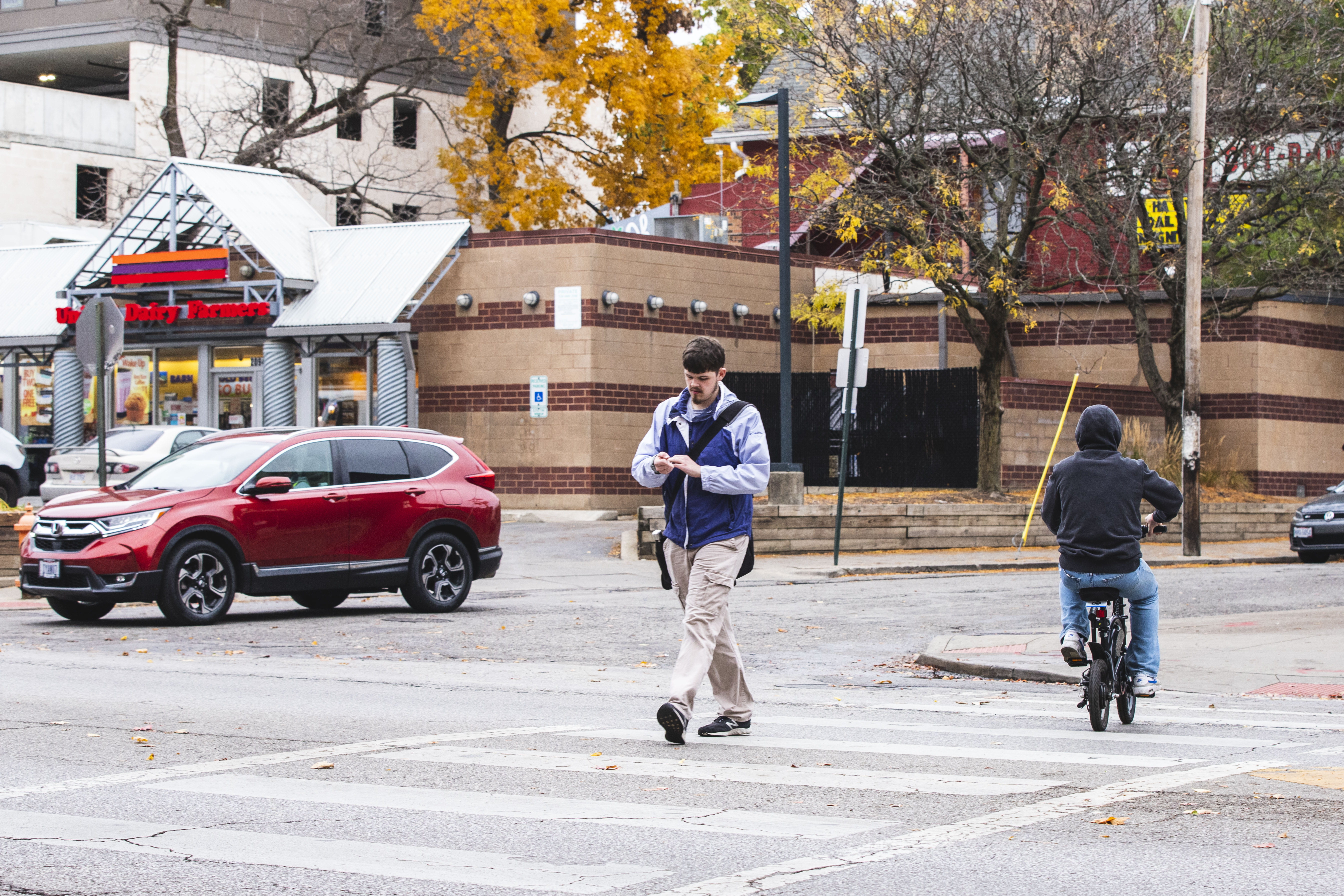
Ohio State students may see safer crosswalks after a traffic engineer was invited to join a panel dedicated to researching guidelines for crosswalks. Credit: Zachary Rilley | Photo Editor
No need to fear, Ohio State’s traffic engineer is here to help faculty, staff and students feel safe as they cross the street through his involvement in a National Academies of Sciences, Engineering, and Medicine project studying crosswalk placement.
According to the Ohio Department of Public Safety Crash Statistic System, from Oct. 13, 2021, to Oct. 13, 2022, there were 93 crashes reported by the University Police Division — 16 involved pedestrians, skaters or bicyclists; seven occurred outside marked crosswalks or the travel lane and seven led to major injuries.
Balaji Ponnu, who received a Ph.D. in civil engineering from Ohio State in 2018, said he was invited to the Pedestrian Crosswalk Spacing and Placement Guidance to Improve Safety project with the National Cooperative Highway Research Program. He said a goal is to analyze the maximum distance pedestrians travel to use a crosswalk to determine proper spacing guidelines for future installations, which may prevent jaywalking.
“We will find that distance — that magic number,” Ponnu said. “If we have a thousand feet distance between two crosswalks, we should probably have one more between them so that people would not jaywalk at unsafe locations.”
According to the National Academies of Sciences, Engineering, and Medicine, national traffic collision deaths increased by 44 percent from 2010-19, with an estimated 6,205 pedestrians killed. Its research also showed 80 percent of those pedestrian deaths occurred at locations without crosswalks.
Ponnu said he was likely invited to the panel because of his academic qualifications, research on crosswalks at college campuses and his role as a traffic engineer for Ohio State.
Ponnu will vote on the research firm to work on the project, he said. He said data for the project will be collected by the firm from pedestrian interviews, surveys and observations regarding their street-crossing patterns.
“I think it will be done, probably, at several, you know, many locations across the country so that it’s representative of the whole country, because the project is for the entire United States,” Ponnu said.
Ponnu said he was part of establishing the fences at the medical campus and alongside West Woodruff Avenue, as well as several recommendations for yield signs, flashing stop signs and overhead flashing signals.
“All these, you know, different measures have been placed for helping both pedestrians not to jaywalk and make vehicles aware that there’s a pedestrian crossing,” Ponnu said.
University spokesperson Nicole Holman said in an email crosswalk construction at Ohio State is dependent on many factors — such as traffic volumes, location and existing infrastructure.
“General crosswalk design guidelines are available in traffic control manuals, however the guidance is not uniform,” Holman said. “In addition, crosswalks on campus have been installed at different points over the last several decades, so design variation occurs.”
Ponnu said university construction projects use multiple companies which sometimes have their own guidelines about how and where crosswalks should be constructed.
“There’s no code that says, ‘OK, there’s a midblock crosswalk. Provide this control,’” Ponnu said. “There’s nothing, at least, that is on a federal standard.”
Ponnu said he hopes he can use the research conducted by the NCHRP project and apply it to Ohio State through safety recommendations.
“We will be able to monitor or, you know, make sure that the locations for crossings are closer than they are right now,” Ponnu said. “Or, if there’s a location that needs closer crosswalk distances, we will be able to implement those, or we will at least be able to recommend those.”
University spokesperson Dan Hedman said students should limit distractions and pay attention to their surroundings when traveling on or off campus.
“You see a lot of people walking down the street, and they’re looking at their cellphone or they have earbuds in,” Hedman said. “It’s really hard to hear a car coming, or see a scooter or even other pedestrians or bicyclists coming at or toward you when you’re distracted.”
Holman said it’s important for people traveling across campus to know where the safest places for them are and what to wear, especially as winter approaches.
“With shorter days and evenings staying darker, we also encouraged Buckeyes to wear bright and reflective clothing, dress to be seen and protect your head,” Holman said.


